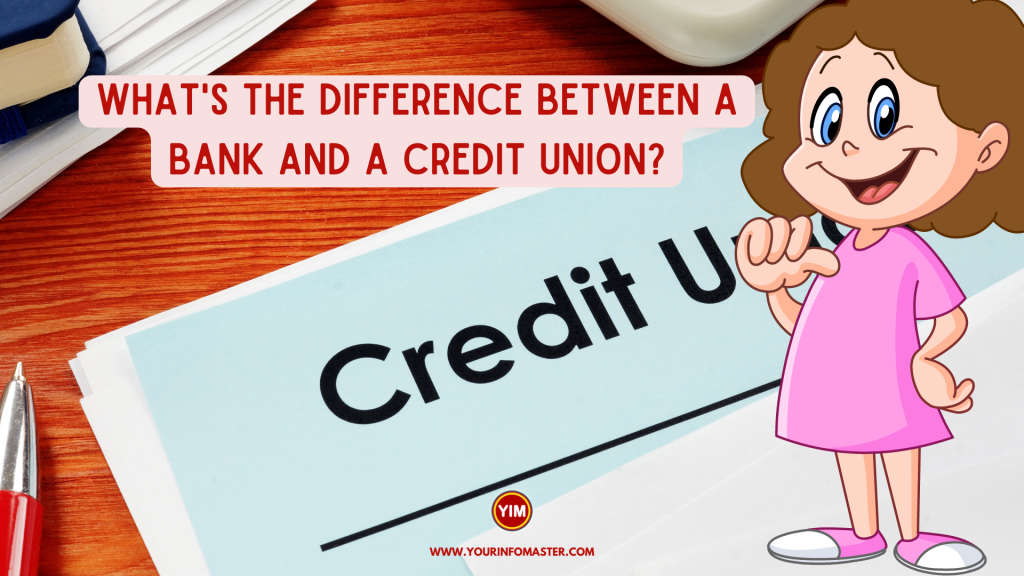I am going to explain the blog post “What’s the difference between a bank and a credit union?“
When it comes to managing our finances, we often have the option of choosing between a bank or a credit union. While both institutions offer similar services, there are some fundamental differences between the two. In this blog post, we will explore the key differences between a bank and a credit union.
A bank and a credit union are financial institutions that offer services such as loans, savings accounts, checking accounts, and credit cards. However, their structures, regulations, and objectives are different. In the following sections, we will discuss the ten key differences between a bank and a credit union.
Check also: What is the difference between rat and mice?
10 Differences between a Bank and a credit Union
Here is a list of 10 differences between a bank and a credit union:
- Ownership
- Structure
- Regulation
- Membership
- Products and Services
- Fees
- Interest Rates
- Accessibility
- Technology
- Mission
Check also: What does it mean if you dream of snakes?
Detail of 10 Differences between a Bank and a credit union
Here is the detail of 10 differences between a bank and a credit union:
- Ownership: Banks are owned by shareholders, while credit unions are owned by their members.
- Structure: Banks are for-profit institutions, while credit unions are not-for-profit organizations.
- Regulation: Banks are regulated by federal and state agencies, while credit unions are regulated by the National Credit Union Administration (NCUA).
- Membership: Banks do not have membership requirements, while credit unions require members to meet certain eligibility criteria.
- Products and Services: Banks offer a wider range of products and services, while credit unions offer more personalized services and focus on member needs.
- Fees: Banks charge higher fees for their products and services, while credit unions typically have lower fees.
- Interest Rates: Credit unions generally offer higher interest rates on deposits and lower interest rates on loans compared to banks.
- Accessibility: Banks have a larger network of branches and ATMs, while credit unions have a smaller network but often offer shared branching and ATM access.
- Technology: Banks tend to have more advanced technology and digital services compared to credit unions.
- Mission: Banks focus on maximizing profits for shareholders, while credit unions focus on serving the needs of their members and the community.
Check also: What is the spiritual meaning of fish in a dream?
Conclusion
In conclusion, while banks and credit unions offer similar services, their ownership, structure, regulation, membership, products and services, fees, interest rates, accessibility, technology, and mission are significantly different.
Choosing between a bank and a credit union will ultimately depend on individual financial needs, preferences, and values. Regardless of the institution you choose, it is important to understand the differences and make an informed decision that best suits your financial goals.
See also: Can ChatGPT Write Essays? Exploring the Capabilities of an AI Language Model
If you really enjoyed the article “What’s the difference between a bank and a credit union?,” then I would be very grateful if you’d help it spread by emailing it to your friends or sharing it on Twitter, Instagram, or Facebook. Thank you!
Have you read “What’s the difference between a bank and a credit union?“ Which of these blogs are you reading, and how is it similar to one of them?

